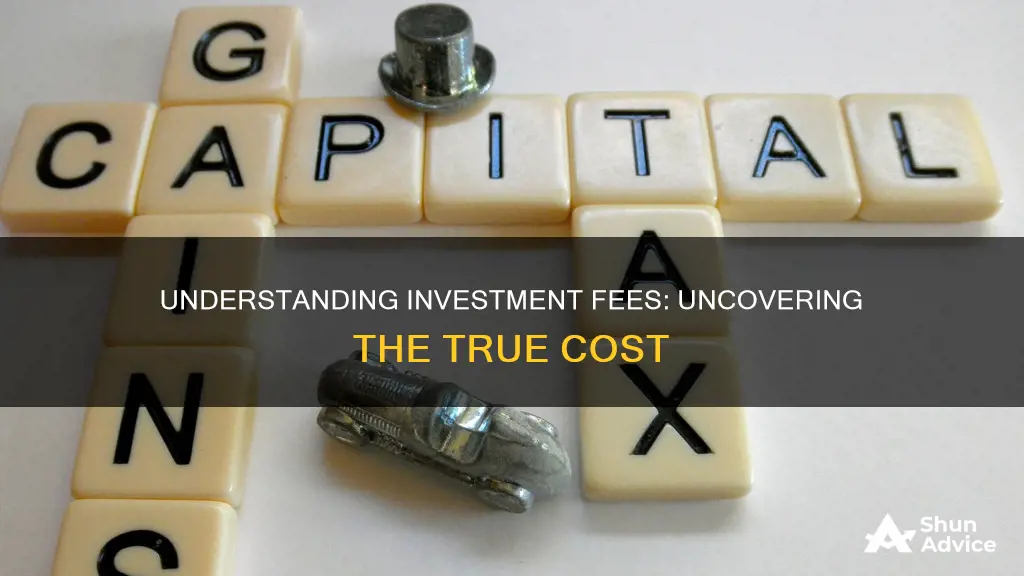
There are many types of investments, from safe lower-return assets to riskier, higher-return ones. The best investments for you depend on your financial situation, risk tolerance, and time horizon.
1. High-yield savings accounts: These accounts offer a higher interest rate than traditional savings accounts, providing accessible funds with potential income through interest.
2. Long-term certificates of deposit (CDs): CDs are considered safe investments, offering higher interest rates than savings accounts. Long-term CDs are ideal when interest rates are falling to lock in higher returns.
3. Long-term corporate bond funds: These funds invest in bonds issued by corporations and tend to provide higher returns than government or municipal bond funds.
4. Dividend stock funds: Dividend stocks pay out a portion of the company's profits to shareholders, often on a quarterly basis. Dividend stock funds reduce risk by diversifying your portfolio across multiple companies.
5. Value stock funds: These funds invest in stocks that are bargain-priced relative to the market, offering a safer option during stock market valuation surges.
6. Small-cap stock funds: Small-cap funds invest in stocks of smaller companies with strong growth prospects. They can provide significant returns but tend to be riskier than large-cap stocks.
7. Real estate investment trusts (REITs): REITs are a way to invest in real estate, providing diversified exposure to the sector. They pay out dividends and offer potential capital appreciation.
8. S&P 500 index funds: These funds are based on a diverse range of large American companies, offering broad exposure to the stock market with lower risk compared to individual stocks.
9. Nasdaq-100 index funds: Nasdaq-100 index funds provide exposure to some of the biggest tech companies, offering growth potential but also carrying higher volatility risks.
10. Rental housing: Investing in rental properties can generate regular cash flow but requires active management and a long-term commitment.
11. Mutual funds: Mutual funds may generate income through dividends, interest, or capital gains. Taxes on mutual funds depend on the type of distribution and other factors.
12. Retirement accounts: Traditional retirement accounts like 401(k)s and IRAs offer tax advantages, such as tax deductions or tax-free growth, depending on the type of account.
| Characteristics | Values |
|---|---|
| Types of Investments | Stocks, bonds, real estate, retirement accounts, mutual funds, ETFs, REITs, dividend stocks, capital assets, collectibles, etc. |
| Taxes on Investments | Capital gains tax, dividend tax, mutual fund tax, home sale tax, etc. |
| Tax Rate | Depends on the type of investment, the duration of investment, and the investor's income and filing status. |
| Tax Minimization Strategies | Tax-loss harvesting, holding investments for a certain period, reinvesting dividends, using tax-advantaged accounts, etc. |
What You'll Learn

Taxes on capital gains
Capital gains refer to the profits you get when you sell an asset for more than its original value. Capital gains can be subject to either short-term or long-term tax rates, depending on how long you owned the asset.
Short-term Capital Gains
Short-term capital gains refer to capital assets held for a year or less. These gains are usually taxed at your ordinary income tax rate, which ranges from 10% to 37%.
Long-term Capital Gains
Long-term capital gains refer to capital assets held for more than a year. The long-term capital gains tax rates are typically lower than your ordinary income tax rate and generally max out at 20%.
Net Investment Income Tax
Individuals with significant investment income may be subject to the Net Investment Income Tax (NIIT), an additional 3.8% tax on top of the usual capital gains taxes.
Exceptions
Certain types of investments have higher capital gains tax rates. The most notable exception is collectibles, such as rare stamps, coins, and art. These types of investments typically have a long-term capital gains tax rate of 28%.
Tax-loss Harvesting
You can offset your capital gains with your capital losses. If your net capital loss exceeds your net capital gains, you can also offset your ordinary income by up to $3,000 ($1,500 for those married filing separately). Any additional losses can be carried forward to future years to offset capital gains or ordinary income.
Tax-advantaged Accounts
Certain types of investments have special tax treatment. For example, investments held in tax-advantaged accounts like 401(k)s, individual retirement accounts (IRAs), and health savings accounts (HSAs) are generally not subject to capital gains taxes.
Cost Basis
To determine whether you have a capital gain or loss, you must subtract the cost basis of your investment from the sale price. The cost basis is usually what you paid for the investment, plus any adjustments such as broker's fees or commissions.
Capital Gains and Your Income
Capital gains taxes are determined by your income level. The higher your income, the higher the capital gains tax rate you will pay.
Capital Gains and Holding Period
The length of time you hold an investment before selling also affects the capital gains tax rate. Generally, short-term capital gains are taxed at a higher rate than long-term capital gains.
State Taxes on Capital Gains
In addition to federal capital gains taxes, most states also collect tax on capital gains. The tax rate and rules for capital gains tax vary by state.
Rich People's Investment Strategies
You may want to see also

Taxes on dividends
Dividends are payments, usually earnings, from a company to certain shareholders. They are taxed differently depending on whether they are qualified or non-qualified dividends.
Qualified Dividends
For a dividend to be considered qualified, it must meet two main criteria:
- The dividend is paid by a U.S. corporation or a qualifying foreign corporation.
- The investor owned the stock for more than 60 days within a specific 121-day holding period.
Qualified dividends are taxed at 0%, 15%, or 20%, depending on the investor's income level, filing status, and tax bracket. For the 2024 tax year, qualified dividends may be taxed at 0% if the investor's taxable income falls below:
- $47,025 for those filing single or married filing separately
- $63,000 for head of household filers
- $94,050 for married filing jointly or qualifying widow(er) filing status
The qualified dividend tax rate increases to 15% for taxable income above:
- $47,026 through $518,900 for single filers
- $47,026 through $291,850 for married filing separately filers
- $63,001 through $551,350 for head of household filers
- $94,051 through $583,750 for married filing jointly or qualifying widow(er) filers
Qualified dividend income above the upper limits of the 15% bracket requires paying a 20% tax rate on any remaining qualified dividend income. Depending on the investor's specific tax situation, qualified dividends may also be subject to the 3.8% Net Investment Income Tax.
Non-Qualified Dividends
Non-qualified or "ordinary" dividends are taxed at the investor's ordinary income tax rate, which as of the 2023 tax year, maxes out at 37%. For the 2024 tax year, ordinary dividends are taxed using the ordinary income tax brackets.
Tax-Free Dividends
Some dividends are tax-free, including:
- Dividends paid on stocks held in a retirement account such as a Roth IRA, traditional IRA, or 401(k).
- Dividends earned by anyone whose taxable income falls into the three lowest U.S. federal income tax brackets. For the 2024 tax year, this includes single filers with taxable income of $47,025 or less, and married couples filing jointly with taxable income of $94,050 or less.
- Nontaxable distributions, such as a return of capital.
Equity for Investment: What's a Fair Trade?
You may want to see also

Taxes on investments in a 401(k)
Taxes on 401(k) investments depend on whether you have a traditional or Roth 401(k) plan.
Traditional 401(k)
With a traditional 401(k), you contribute pre-tax dollars, meaning that your contributions are taken from your gross salary before taxes. This reduces your taxable income for the year, as you don't pay income tax on the amount you contribute to your 401(k). However, you will pay taxes on the money when you withdraw it in retirement, as it is taxed as regular income. The rate you pay will depend on the federal tax bracket you fall into at the time of withdrawal.
Roth 401(k)
With a Roth 401(k), you contribute post-tax dollars, meaning that you don't get a tax deduction for your contributions, and you've already paid taxes on them. Therefore, when you withdraw money in retirement, you can generally do so tax-free, provided that your account is at least five years old and you are 59½ or older.
Early withdrawals
If you withdraw money from your 401(k) before you turn 59½, you will usually have to pay taxes on the withdrawal, plus a 10% penalty. However, there are some exceptions to this penalty, such as in cases of financial hardship or disability.
The Student Debt Dilemma: To Invest or To Repay?
You may want to see also

Taxes on mutual funds
Mutual funds are considered one of the most profitable and tax-efficient investment options. However, it is important to understand how your mutual fund returns will be taxed to make informed investment decisions and effectively plan your taxes. Here is an overview of the taxes on mutual funds:
Taxation on Mutual Funds:
- Dividends: Dividends are a portion of the profits distributed to investors by mutual fund companies. Previously, dividends were tax-free for investors as companies paid the Dividend Distribution Tax (DDT). However, amendments to the Union Budget in 2020 changed this. Now, dividends offered by mutual fund schemes are taxed like any other income. They are added to the investor's taxable income and taxed according to their respective income tax slab rates.
- Capital Gains: Capital gains refer to the profits realised when investors sell their capital assets for a higher price than their total investment amount. Mutual funds offer returns in the form of capital gains and dividends. Both types of income are taxable. The tax rate on capital gains depends on the holding period and the type of mutual fund.
- Holding Period: The holding period is the time between the purchase and sale of mutual fund units. In most countries, including India, longer holding periods result in lower tax liability. Thus, holding mutual funds for an extended period can reduce the tax amount payable on capital gains.
- Types of Mutual Funds: Different types of mutual funds, such as equity funds, debt funds, and hybrid funds, have varying taxation rules. For example, equity funds with more than 65% of their total fund amount invested in equity shares are taxed differently from debt funds, which have a higher debt exposure.
- Securities Transaction Tax (STT): In addition to taxes on dividends and capital gains, there is the STT, which is levied by the government when buying or selling mutual fund units of an equity fund or a hybrid equity-oriented fund. The STT rate is typically 0.001% of the transaction value.
Tax Strategies for Mutual Funds:
- Timing of Purchases and Sales: It is important to consider the timing of fund purchases and sales relative to distributions. Buying mutual fund shares just before a major distribution occurs can result in a significant tax impact as you will be taxed on the gains for the entire year, even if you did not own the shares for the full period.
- Consider the Fund's Turnover Rate: Funds with high turnover rates, which trade securities frequently, may accumulate more taxable gains and incur higher trading fees, reducing net earnings.
- Utilise Tax-Advantaged Accounts: Certain accounts, such as individual retirement and college savings accounts, offer tax advantages. Mutual funds held in these accounts are only taxed when earnings or pre-tax contributions are withdrawn.
- Understand the Tax Implications of Different Mutual Funds: Different types of mutual funds have varying tax implications. For example, funds with high dividend-paying stocks will likely result in more taxable dividends, while index funds tend to buy and sell their underlying investments infrequently, resulting in fewer taxable capital gains distributions.
- Consult a Tax Professional: There are numerous factors and strategies to consider when investing in mutual funds to minimise tax liability. Consulting a tax professional can help you navigate these complexities and make informed investment decisions.
Young People: Invest Now, Gain Later
You may want to see also

Taxes on the sale of a house
When selling a house, you may need to pay taxes on any profit you make. This is known as a capital gains tax. However, there are some circumstances in which you may be exempt from paying these taxes.
Capital Gains Tax on Home Sales
If you sell your home for more than you paid for it, you will generally need to pay capital gains tax on the profit. The amount of tax you will pay depends on your income, your filing status, and how long you owned the property before selling.
How to Calculate Capital Gains Tax
The capital gains tax on your home sale depends on the amount of profit you make from the sale. Profit is generally defined as the difference between the amount you paid for the home and the amount you sold it for.
If you owned the home for a year or less before selling, short-term capital gains tax rates may apply. The rate is equal to your ordinary income tax rate, also known as your income tax bracket.
If you owned the home for longer than a year before selling, long-term capital gains tax rates may apply. These rates are typically lower than short-term capital gains tax rates. Many people qualify for a 0% tax rate, while others pay either 15% or 20%, depending on their filing status and income.
How to Avoid Capital Gains Tax on Home Sales
There are several ways to reduce or avoid capital gains taxes on a home sale. It depends on the property type and your filing status. Here are some scenarios to keep in mind:
- Live in the house for at least two years: The two years don't need to be consecutive, but if you sell a house that you didn't live in for at least two years, the gains will generally be taxable.
- See if you qualify for an exception: If you have a taxable gain on the sale of your home, you may still be able to exclude some of it if you sold the house due to work, health, or other unforeseen circumstances.
- Keep receipts for home improvements: The cost basis of your home includes what you paid to purchase it, as well as any improvements you've made. When your cost basis is higher, your exposure to capital gains tax may be lower.
- Convert a rental or additional property into your primary residence: If you plan to sell an additional property, you can establish it as your primary residence for at least two years to avoid capital gains taxes. However, you won't be able to exclude the portion you depreciated while renting the property.
Taxes on Primary Residences vs. Rental Properties
It's important to note that primary residences have different capital gains guidelines than rental and investment properties. While you can exempt a certain amount of profit from capital gains taxes on the sale of your primary residence, rental properties don't have the same exclusions.
Additionally, if you sell a rental property that you've owned for less than a year, try to stretch ownership to at least 12 months. Otherwise, the profit will be taxed as ordinary income, which can result in a higher tax rate.
Pay Down Mortgage or Invest: Where Should Your Money Go?
You may want to see also
Frequently asked questions
Investment income includes interest payments, dividends, capital gains from the sale of stocks or other assets, and profits from other investment types.
The amount of tax you owe on your investments depends on several factors, including the type of investment, how long you held the investment, and your individual tax situation. You should consult a tax professional or tax software to determine your precise tax liability.
There are several ways to minimize taxes on your investments:
- Hold investments for a certain period to qualify for a lower tax rate on dividends.
- Use losses to offset gains and reduce capital gains taxes (a strategy known as tax-loss harvesting).
- Hold dividend-paying investments inside a retirement account to defer taxes.
- Take advantage of tax credits and deductions, such as the Earned Income Tax Credit (EITC).







